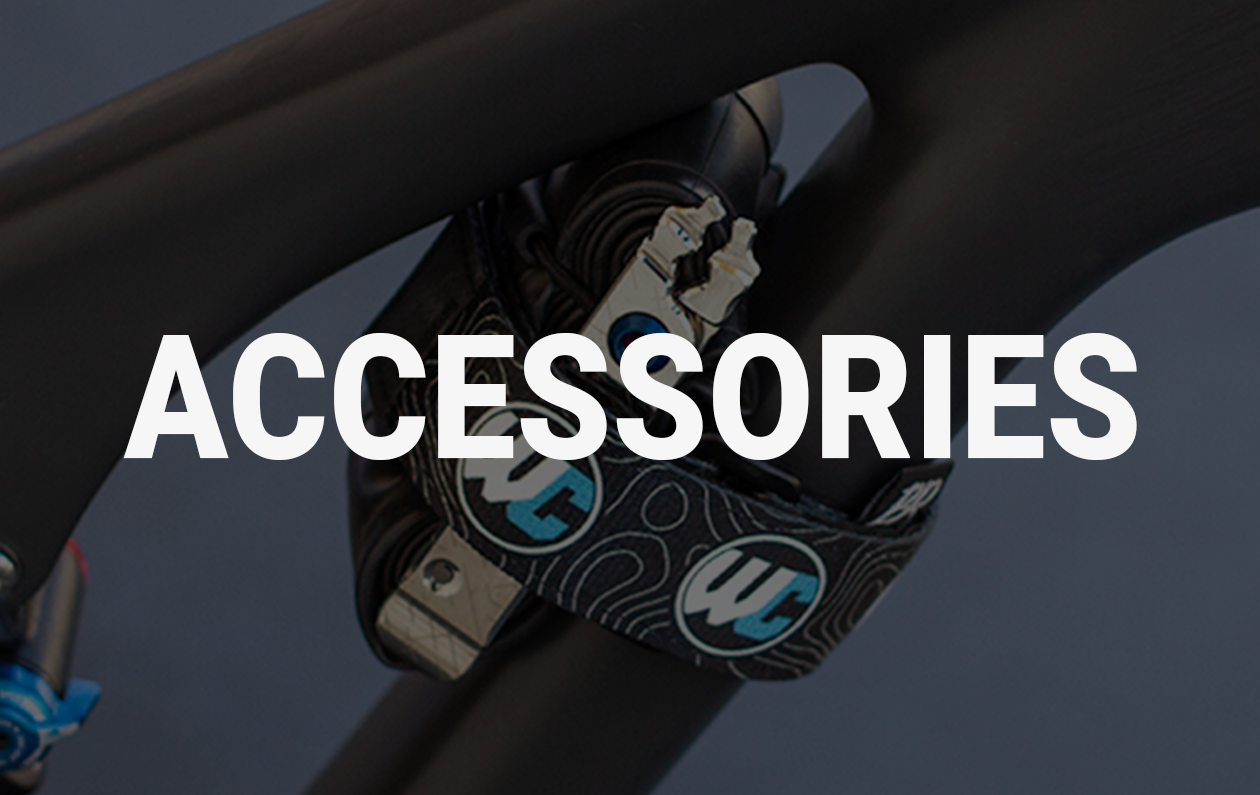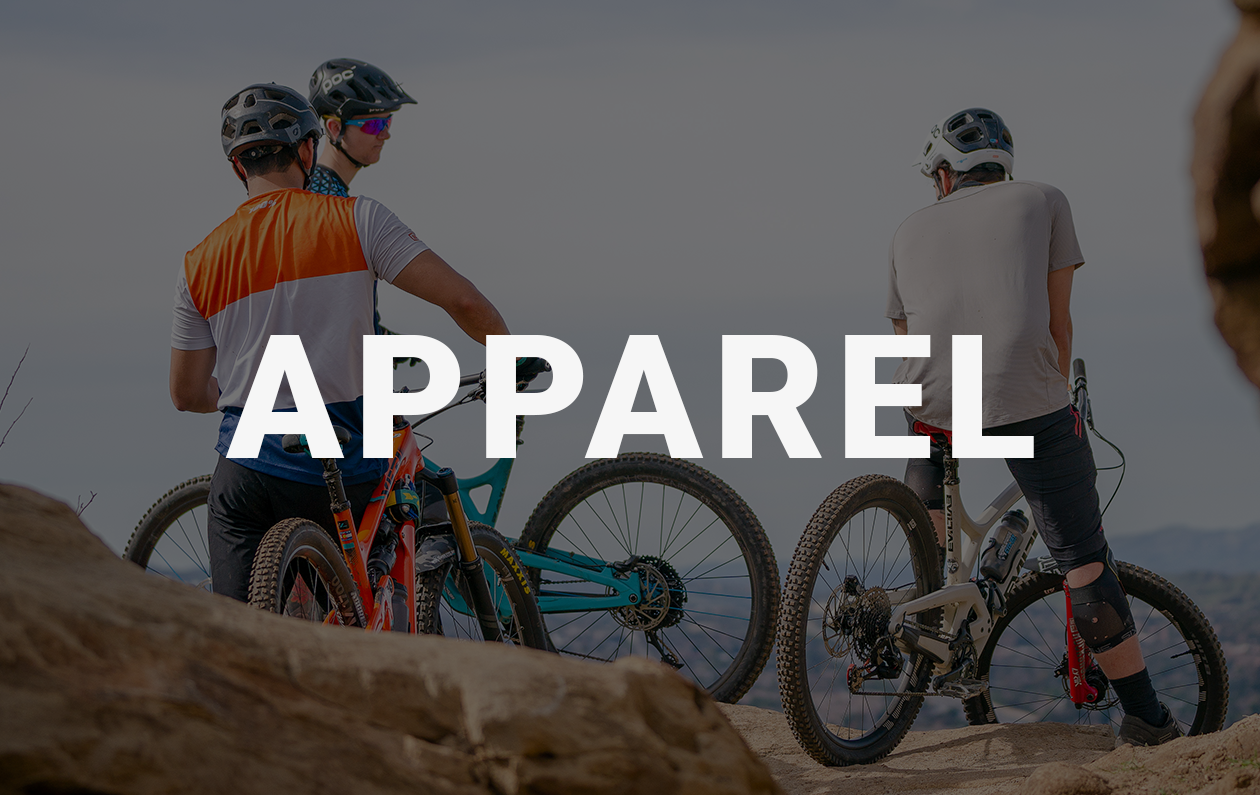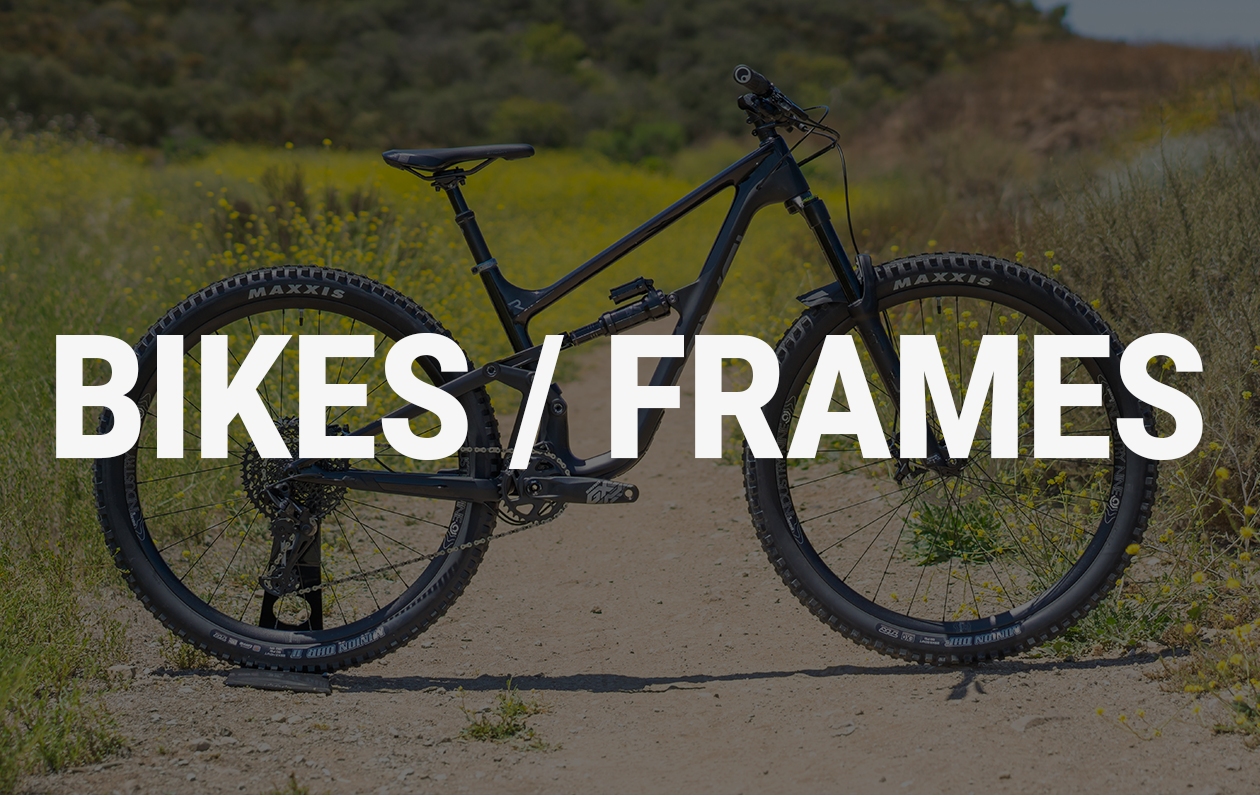- Continue Shopping
- Your Cart is Empty
Should You Be Using Tire Inserts in Your Mountain Bike Wheels?
Over the last few years, foam tire inserts have become more and more popular for mountain bike riders riding on aggressive terrain. It seems like a novel concept, but figuring out the best way to keep air in your tires has always been a challenge. Tire technology and wheel design have come a long way even in the last ten years. These foam tire inserts seem like the next step in wheel durability and improved performance. So what are some of the benefits to using a tire insert? And should you be running a tire insert in your mountain bike wheels? We are going to be answering those questions here while going over the three most popular mountain bike tire inserts from Flat Tire Defender, Cush Core, and Huck Norris.
Mountain bike tire inserts come in clutch when you need them most!
Benefits to Using Mountain Bike Tire Inserts
Each of these different tire inserts have their own take on accomplishing the same things; rim protection, wheel damping, and tire stability. Find the tire insert that is going to suit your riding style the most!
- One of the biggest benefits to using a foam insert inside your tubeless mountain bike tire is rim protection. In a traditional tubeless setup, as you run over rough terrain, you are at risk for pinging the rim on rocks or roots. As you hit a square edge bump, the tire can compress all the way on to the rim and can either damage the rim or pinch small cuts in the tire. All of the different foam inserts are designed to act as a cushion in between the rim and the tire. When the insert is installed, if you were to hit the same bump, the tire starts to compress and some of the impact is absorbed by the insert. This can be the difference in getting a flat tire and continuing to shred out on the trail.
- Another benefit that usually goes under the radar is the added wheel damping that comes with running a tire insert. Depending on the particular insert you are using, you will notice the wheels take on a more damped feel keeping you planted on the trail. This is something you may not even pick up on as being an issue if you are just using a traditional tubeless setup. The tire inserts absorb some of the vibrations coming up from the trail and will keep your wheels from feeling like they are pinging off of rocks and roots. This not only gives you a smoother ride but also keeps your bike on line and tracking the ground. Cush Core calls their insert “suspension for your tires.”
- Just like using a wider rim, riding with foam tire inserts can give you more tire stability allowing you to rider harder and push harder in the turns without having to worry about ripping the tire off the rim. Even if you aren’t a rider that is looking to blow your tire off the rim, additional tire stability will help keep the tread of the tire gripping the trail. The safety blanket certainly doesn’t hurt either, because sometimes crazy things happen out on the trail.
- For those riders who don’t think they have a need for tire inserts because they can just go up in tire pressure, running more and more tire pressure only gives you added rim protection. With such high pressures, the tire can’t conform to the ground and give you grip. After you install one of these foam tire inserts, you can get away with running lower tire pressure to give you both optimal grip and rim protection.
- For those riders who are concerned about adding weight, because of the benefits in using a tire insert, you can afford to run a lighter rim or a lighter tire to offset the weight of the insert. For example, if you are someone who rides enduro with Maxxis Double Down casing tires and doesn’t want the additional weight of a tire insert, you may be able to get away with running the Maxxis EXO Protection casing tires in combination with your favorite tire insert. That way you get all the same benefits of using a tire insert without as much of a weight penalty.

Flat Tire Defender Insert after 6 months of riding
Flat Tire Defender
Flat Tire Defender was the first to do it! The owner of FTD, Frank Stacey, has a history designing for Trek's tire and wheel brand Bontrager. This is what originally brought Frank's idea of a foam tire insert to the likes of World Cup downhill racers Aaron Gwin, Brook Macdonald, and Neko Mulally years before the product was ever released or even heard about. Frank and his team have continued to develop and push the boundaries on what can be done with mountain bike tire inserts. Because of this ongoing effort, Flat Tire Defender still remains one of the leaders in tire inserts.
FTD has three different model tire inserts available right now; the Elite Series, the ET Series, and the EB Series. The most popular is certainly their Elite Series inserts. They are designed for downhill and enduro riding but can be found on a large variety of bike. The Elite series inserts feature a front and rear specific insert to give the best of both worlds; minimal gyro feel and less weight up front matched with ample rim protection out back. The ET series is sized to fit a slightly smaller rim and tire and is optimized more for your every day trail bike. Lastly, the EB series inserts are for 27.5 Plus bikes. Even Plus sized tires can benefit from running a tire insert.


With most all tire inserts, you need to use a specific air valve so that air can still flow in and out of the valve when the insert is installed. You can imagine that because the foam insert sits up against the rim bed, it would cover up the whole on a traditional valve and stop air from flowing. Flat Tire Defender has their own No Clog valve that comes included when you buy your own inserts that is specifically designed to not get clogged by the insert. Most recently, FTD has updated their valve design again with the NC40 valve.

The Flat Tire Defender NC40 Valve uses specifically designed relief cuts to allow air to pass around the foam insert
Cush Core
Whenever anyone asks about mountain bike tire inserts, they are probably going to ask about Cush Core. The Cush Core foam insert has become one of the most popular inserts and for good reason. Cush Core calls their foam inserts "tire suspension" because the inserts are there to dampen the vibrations from the trail before the suspension has to. Of the three inserts we are talking about here, the Cush Core is definitely the most comprehensive. It's the hardest to put on, it takes up the largest amount of volume inside the tire, and arguably changes the feel of the tires the most out on the trail. Because of the support that Cush Core gives to your wheels, you may be able to use lighter casing tires and rims to find the perfect balance of weight and performance.
Each Cush Core box comes with two foam inserts, two Cush Core specific valve stems, and 4 rim stickers to finish off your kit. Cush Core offers two different models depending on how wide the tires are on your bike. The standard width insert fits tires up to 2.6" wide and is avalable for 26", 27.5", and 29" wheels. The Plus size insert is designed for tires from 2.6" - 3.0" wide and is only available for 27.5" wheels. Each of the different Cush Core models can also be purchased as a single insert.
Huck Norris
Just like Flat Tire Defender and Cush Core, Huck Norris's aim is to help eliminate flat tires, give more impact protection, and give your mountain wheels a more damped feel. The Huck Norris design is much simpler than either the FTD or the Cush Core inserts. The Huck Norris is simply a flat piece of foam that lays flat in between the tire and the rim. Specifically placed relief cuts remove unnecessary weight and also help with tubeless sealant flow.
The Huck Norris insert is available in a variety of sizes for different rim and tire widths. They offer a Small, Medium, and Large width all in the same thickness. There is also a downhill specific insert that is a little bit thicker to help absorb the big impacts you will find riding a downhill bike. Huck Norris also has a tire insert specifically for fat bike tires, one thing that FTD and Cush Core don’t offer.
Tips on How to Install Tire Inserts
The process for installing each of these tire inserts is for the most part the same, but there are a few different tips and tricks that will make your life a little bit easier. Before you install any of these different tire inserts, make sure you have the appropriate valve stem on the rim first. With the Flat Tire Defender, it’s easiest to put the tire on the rim before you slide in the insert just like you would install a tube. After you have the tire half way on and the tire insert installed, add tubeless sealant and start working your way around the bead. As the bead begins to get tight, make sure the other side of the tire is set all the way down in the rim bed. Watch the video below to follow along Aaron Gwin’s mechanic, John Hall, as he walks you through the correct way to install the Flat Tire Defender.
Installing the Cush Core is a little bit different. Because the Cush Core fits a bit tighter on the rim, and because it is wider than the FTD, it is easiest to stretch the Cush Core around the rim before you even get to the tire. Next drop the Cush Core and wheel in to the tire and work the bead on the rim one side at a time. Wrestling the tire around the Cush Core might be a little bit of a struggle the first time, but you will get quicker as you go and it will all be worth it in the end. Make sure you install your Cush Core specific valve stems before you stretch the insert around the rim.
The Huck Norris is certainly the easiest insert of three here to install. Similar to the Flat Tire Defender, slide the tire half way on the rim, slide in the Huck Norris, add your tubeless sealant, and finish pushing on the bead. Work your way around the tire and be sure not to damage the rim tape with your tire lever.
Should You Be Using Tire Inserts In Your Mountain Bike Wheels?
First think about what kind of riding you are doing. If you are purely riding cross country, then maybe you don’t need any of kind of tire insert. If you are riding more all mountain trails on an enduro bike, you might want to use one of the inserts here in the rear tire only to avoid the gyroscopic feel in the front wheel. If you are riding very aggressive trails on either your enduro bike or downhill bike, then you might benefit more from running a foam insert in both the front and rear wheels. With the different products that are out there, you can find the right setup for your mountain bike, that caters to your riding style, and something that suits the trails you are riding on.
From the most popular inserts that we have talked about here, the Flat Tire Defender Elite series and Cush Core provide the most sidewall support and rim protection. The Huck Norris and Flat Tire Defender ET series provide less support and protection but also weigh less. Me personally, I prefer the durability and feel of the FTD and ride one in both the front and rear wheels on my downhill bike. On my trail bike, I prefer a Flat Tire Defender ET series foam insert only in the rear. Find the right setup for you and feel free to give us a call at the shop with any questions! We would love to help.

















